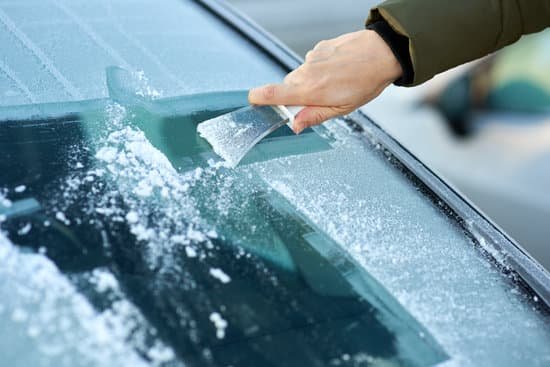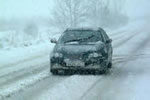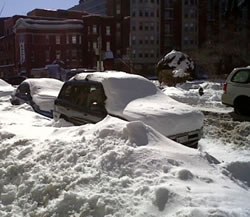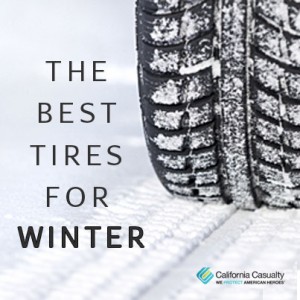

5 Proven Tips for Fighting Winter Fires
Firefighters say that house fires increase in the winter months. Most the fire starters include food left on the stove, candles left near flammable items like decorations or curtains, or space heaters left unattended and close to flammable objects.
As firefighters respond to calls during cold weather conditions, it’s not just about fire and smoke in the structure, but staying attuned to what is happening as a result of snow, ice, freezing rain or wind. Maintaining situational awareness is essential.
• Pay attention to your surroundings at the scene, including your crew and the building structure.
• Proper ladder placement can be critical. With harsh weather conditions, be extra diligent.
The weather can also affect the drivers during the winter. 24% of vehicle crashes occur during rain, sleet, snow or fog, and slick pavement.
Keep this in mind when responding to accidents. The same conditions the accident occurred, weather-related, will also pertain to your experience. It’s essential to arrive at a scene quickly, but not worth risking your safety too.
Uneasiness increases when drivers hear sirens or see lights behind them. Their reactions are mostly stopping short in front of you or skidding into oncoming traffic, which may turn into another incident.
• Drive appropriately for the weather conditions.
• Remember that driving defensively doesn’t mean aggressively
• Always wear your seat belt.
Importantly, stay alert, drive smart, be safe and stay warm.
Getting More Traction: Best Tires for Winter
The changing of the seasons is nice; the heat is replaced by crisp, cool air, we can dig out our favorite sweaters and hoodies and most of us can stop mowing the lawn. However, there is one part of the upcoming winter that I’m dreading – that first storm of the year that starts warm but chills down so quickly it turns sleet and melted snow into a glaze of ice. Traffic will be snarled as drivers with worn tires try to navigate around town. We’ll know the ones who haven’t checked their tire tread; they’ll end up slipping and sliding, causing accidents and clogging major thoroughfares. It happens every year, and if you’ve never seen it yourself check out this video (be aware it does contain some adult language).
And that’s in Colorado, where people should know about having the right tires for winter conditions.
Before you lose your grip this winter, make it a point to have your tires checked. They are the essential piece that keeps your vehicle on road surfaces, protecting you and your children, even when streets become slick with snow and ice.
How do you know which tires will give you the best grip and control when temperatures plunge and roadways freeze? Consumersearch.com analyzed owner reviews and expert tire tests from around the world to come up with its four best snow tire picks for 2015:
- Bridgestone Bizzak WS80 (best winter tire)
- Nokian Hakkapeliitta 8 (best studded snow tire)
- Michelin Pilot Alpin PA4 (best winter performance tire)
- Michelin Latitude X-IceXi2 (best winter tire for SUVs and trucks)
Consumer reports also rated numerous all-season tires for best winter performance and recommends:
- Michelin Defender (all-season)
- Continental PureContact (performance all-season)
- Michelin Ice X13 (winter)
Treading Lightly
Many of us wonder if the tires on our vehicles have enough rubber for treacherous conditions. One determiner is the penny test. Car experts say using simple coins can determine how much tread is left on your tires.
Take It Easy
The Weather Channel says no matter what type of vehicle you drive or the tires you choose, staying off roads in severe winter conditions is your best bet. If you must travel, they offer these safety tips:
- Decrease speeds and leave plenty of room to stop
- Brake gently to avoid skids
- Turn on lights and keep lights and windshields clear and clean
- Use low gears to keep traction
- Be especially careful on bridges, overpasses and infrequently traveled roads that are likely to ice up quickly
- Keep an emergency kit in your vehicle
Let’s face it, even in the best weather conditions accidents happen. Don’t be skating on thin ice when it comes to insurance – make sure your auto insurance policy offers the best protection at the best value. Call a California Casualty advisor today for a free, no hassle policy review and comparison at 1.800.800.9410; the savings could warm your heart and pocketbook.
Sources for this article:
https://www.youtube.com/watch?v=AX_KyLuhdDQ
https://www.consumersearch.com/snow-tires
https://www.consumerreports.org/cro/tires/best-and-worst-tires-in-all-weather-conditions
https://maps.weather.com/activities/driving/drivingsafety/drivingsafetytips/snow.html
Winter Auto Safety Recap
 In many areas, the weather has been pretty good so far this year. But, this week started a flurry (pun intended) of winter weather, and I thought it would be a good time to recap some important safety tips for cold weather!
In many areas, the weather has been pretty good so far this year. But, this week started a flurry (pun intended) of winter weather, and I thought it would be a good time to recap some important safety tips for cold weather!
Winter Care Care Checklist – if you haven’t prepped your car for cold weather, you still have time!
What to do when your pipes freeze – It happens to the best of us (or, at least, it happened to me!). A quick guide to getting your pipes thawed without flooding your house.
Carbon monoxide safety – Firing up your heaters can lead to hidden dangers. Here are some tips for CO prevention.
Driving Safety in Snow and Ice – When the snow and ice come down, the roads get slippery. Here are some tips for making that commute safely.
Winter Car Care Checklist
 Here at CalCas – we care about our customers. Even if you’re not a customer, we care about you too! That’s why we wanted to share some tips from the NHSTA for caring for your car in the winter.
Here at CalCas – we care about our customers. Even if you’re not a customer, we care about you too! That’s why we wanted to share some tips from the NHSTA for caring for your car in the winter.
The first thing you should do is get your car serviced and inspected well before the really cold temps arrive. You want to make sure all routine maintenance has been handled – and any repairs that may be needed are made.
A very common problem in cold temperatures is the painful discovery of a dead battery. In frigid temperatures, batteries lose power. It also takes more power to start your car in colder weather, so this is doubly important. Most auto parts shops will check your battery for free these days, so there’s no reason not to know you have a good battery going in to the winter months.
You should also fill your windshield wiper reservoir before bad weather hits. I’d recommend filling it regularly, because few things can make driving more difficult than a dirty windshield. If you buy the kind with anti-freeze in it, it can double as a defroster for those days you’re forced to park out in the snow or ice!

